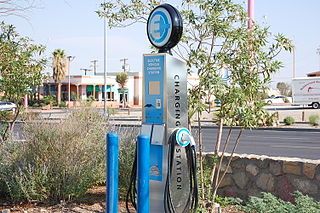Can Electric Vehicle Battery-swapping Succeed?
Given the recent bankruptcy of battery-swapping innovator Project Better Place, it may appear unlikely that battery-swapping has any chance of success – even in the long-term. Yet I’m not sure that’s true – especially in regions with small footprints and huge imperatives to get rid of gasoline (like Israel).
Here’s Tesla CEO Elon Musk at his best, demo’ing the “Tesla Station” which offers drivers a choice: a fast-charge that is free (and always will be) or a battery-swap, for people who want to get back on the road quickly (93 seconds – much faster than filling their gas tank).


Even though I’m horrified by the environmental implications of EV’s, I’m pretty impressed with Tesla here.
They’ve effectively done 2 things by moving in the direction of battery swapping:
1st, they eliminate the worry of extreme distance penalties by using their system. No longer would one feel they would have to spend several extra hours by driving to another state or something… That level of freedom of movement WILL impact the desirability of the car.
2nd, they have aggregated the battery risk: Now all the Tesla batteries are being swapped out and exchanged from car to car, which means everyone is taxing the batteries’ lifespans by some portion, but no-one has to fear that they’ll wear their battery out from heavy use.
Tesla can also now – as routine – just test the batteries that are swapped out, and reject any batteries that have excessive loss of capacity. This eliminates the need for them to ever have to suffer the PR problems in fulfilling warranties, while allowing the drivers to aggregate the replacement costs by all sharing portions of costs for a single battery exchange.
I don’t like EV’s… but this is a very good move. This is the first time I’ve felt Tesla had a real shot at surviving as a niche luxury vehicle company. Of course, it still has a good chance of not surviving as well, but they’re on a path that could really succeed with this.
BTW, the video is pretty sad, as it deliberately sandbags the gasoline fill-up into something that anyone can immediately see is far slower than an actual experience. This causes the disconnect with the video to be the focus of the viewing, rather than the genuine technological breakthrough that is the battery swap. That was foolish marketing.
I have one question with the swapping stations: Tesla has multiple size batteries. Will there be a different battery swap station for each size battery, or will there be one station where the station just gets the specs from the car and can quickly sort through multiple batteries?
I predict that, somewhere down the line, when EVs start absorbing terawatt-hours of off-peak wind (and other flavors of clean energy) that you’ll have a more favorable impression.
Craig,
The only way they could absorb wind power is if there is some form of smart-controls that vary the charging rate on vehicles plugged in overnight and at work… That poses a problem because the act of driving is too important to risk having an under-charged vehicle when wind power wanes for a few hours, so very few drivers would be willing to adopt such a system.
But if you have a new constant overnight charge, the CORRECT response is to increase baseload power generation. That is how the power companies will respond to a gradual increase in constant overnight power demand.
The coal plants aren’t turned off at night when the wind is curtailed. They back off the baseload power to what their calculations project will be the minimum constant power draw needed, and let wind and natural gas (the balance power) fill in for variable energy needs… Increasing baseload demand will merely result in them turning the baseload power down a little less, and they’ll still curtail the wind power. That’s what I’ve tried to explain for years. The EV’s are absolutely not responding to the needs of renewable energy (wind power needs an instantaneously variable demand load centered in the Texas and Oklahoma Panhandles, Iowa, Minnesota, the Dakotas, Kansas, and Nebraska), but rather they respond instead to the needs of the economically struggling coal power plants (they need a constant, prolonged overnight demand increase, especially focused in and around the Northeast, the Northwest, and the Northern Appalachians).
If I’m wrong, I’ll happily eat crow… but I’m not wrong. I think you know that by now.